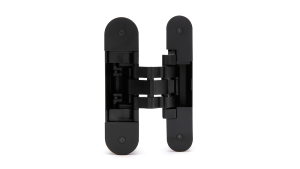Concealed door hinges are a modern solution for achieving a sleek and minimalist look in interior design. Unlike traditional hinges, these hinges are installed within the door and frame, making them invisible when the door is closed. However, over time, adjustments may be necessary to ensure that the door operates smoothly and aligns properly. Learning how to adjust concealed door hinges can help maintain both functionality and aesthetic appeal.
Usability annd Security of Concealed Door Hinges
Concealed door hinges, also known as hidden hinges, are designed to provide a clean appearance while supporting the weight of the door. They are often used in high-end residential and commercial applications, where design integrity is crucial. Properly adjusted hinges ensure that doors open and close smoothly, enhancing both usability and security.
Why Adjustments Are Necessary
As doors experience regular use, they may shift slightly due to changes in humidity, temperature, or simply wear and tear. Misalignment can lead to issues such as difficulty in closing the door, gaps between the door and frame, or even damage to the door or frame itself. Regular adjustments help prevent these problems, ensuring that concealed door hinges function effectively.
Tools Needed for Adjustment
Before you begin, gather the following tools:
- Screwdriver (typically a Phillips head)
- Allen wrench (if applicable)
- Level
- Measuring tape
- Marker or pencil
Having these tools ready will facilitate a smooth adjustment process.
Step-by-Step Adjustment Process
- Inspect the Hinges
Start by inspecting the concealed door hinges for any visible signs of wear or damage. Check for loose screws or parts that may need replacement. If the hinges are in good condition, you can proceed with adjustments.
- Identify Adjustment Points
Most concealed door hinges feature adjustment points that allow for fine-tuning. These points are usually located on the hinge itself and may be indicated by screws or knobs. Refer to the manufacturer’s instructions for specific guidance on your hinge model.
- Adjust the Height
To adjust the height of the door, locate the vertical adjustment screw on the hinge. Turning this screw clockwise will raise the door, while turning it counterclockwise will lower it. Make small adjustments and check the door’s alignment with the frame after each change.
- Adjust the Depth
The depth adjustment controls how far the door sits into the frame. This is particularly important for ensuring a tight seal when the door is closed. Locate the depth adjustment screw and turn it to move the door inward or outward. Again, make incremental adjustments and test the door’s fit.
- Check the Swing
The final adjustment involves the swing of the door. If the door does not close properly or swings too freely, locate the screw that controls the hinge’s tension. Adjusting this screw can help achieve the desired swing action, ensuring the door closes securely without slamming.
- Test the Door
Once all adjustments have been made, open and close the door several times to ensure it operates smoothly. Check for any gaps or misalignment, and make further adjustments if necessary.
Conclusion
Adjusting concealed door hinges is crucial for maintaining the functionality and appearance of your doors. By following these steps, you can ensure that your hinges operate smoothly and align perfectly with the frame.
For those seeking high-quality hinge systems, consider partnering with a reputable door hinges manufacturer. At SMED, we operate globally and are continually expanding our expertise in premium hinge systems. Our commitment to quality and innovation ensures that you receive the best solutions for your door hardware needs, enhancing both style and performance in your spaces.
